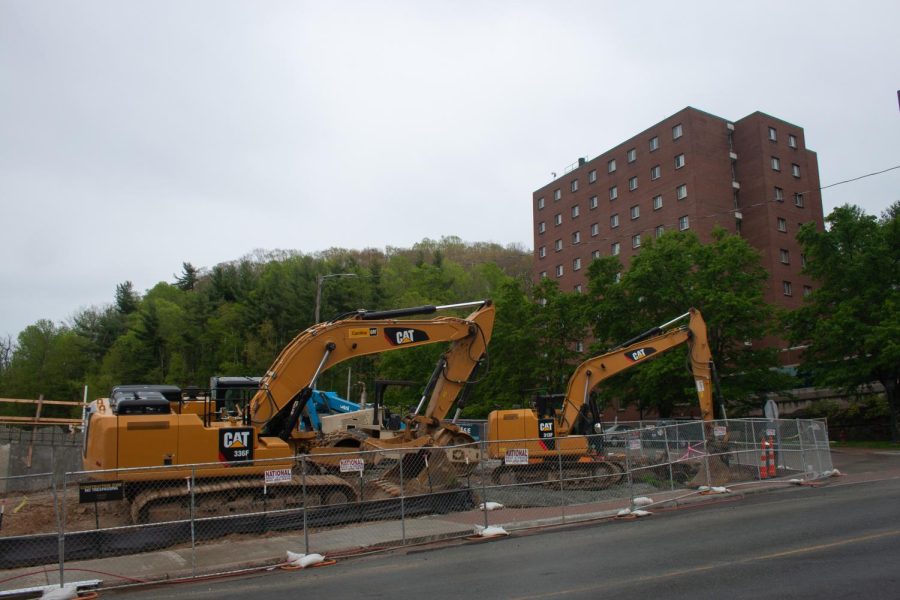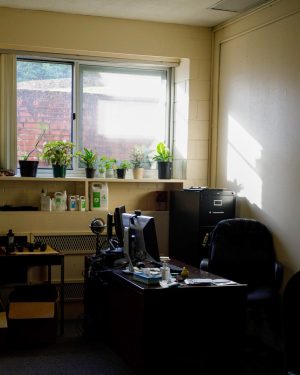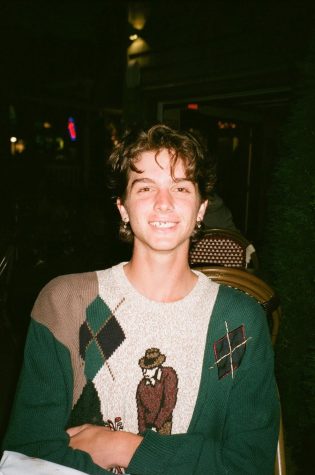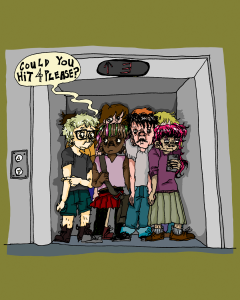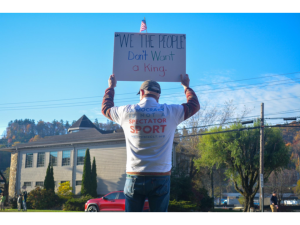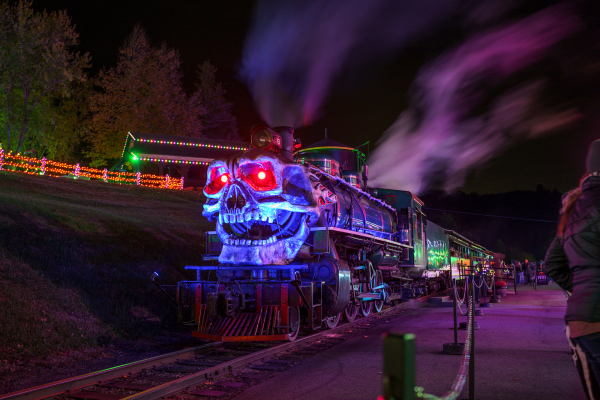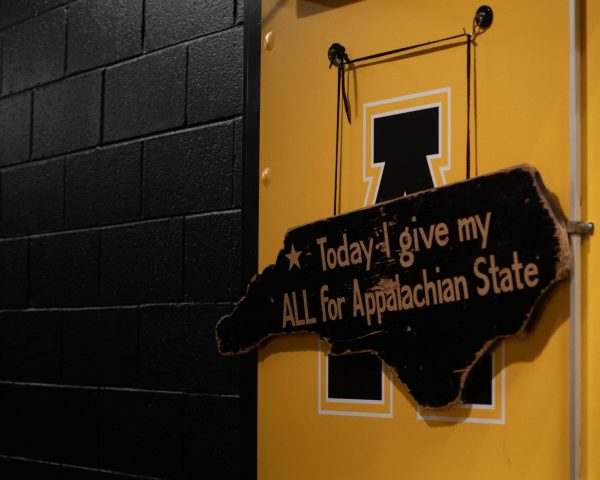Seniors remember demolished dorms
Justice Hall being torn down in May 2021 with Coltrane Hall looming nehind. Coltrane, Justice and Garner were replaced by New River Hall.
May 1, 2023
The dorms do not exist anymore, but the memories forged there live on. Group snowstorm breakfasts. Rooms so small you could touch both walls at the same time. Competitive game nights. Thin walls. Floor pranks. No AC. Secret Santas.
These are but a handful of the memories recalled by App State seniors who once resided in dorms that now too only exist in memory. When the graduating class of 2023 arrived at App State for the first time in the fall 2019, campus was home to Bowie, Coltrane, East, Eggers, Gardner and Justice Residence Halls.
As App State has continued to grow in both size and population, these residence halls have not continued on with it. Justice Residence Hall was demolished in mid-2020, and New River Residence Hall now stands in its place, having opened for students in the fall of 2022. The adjacent Gardner and Coltrane Residence Halls were demolished in mid-2021 and were replaced by New River Hall Lot.
Bowie and Eggers Residence Halls, the last of these older residence halls to have been demolished at the present time, were torn down in mid-to-late-2022 and are slated to be replaced by additional parking areas.
East Residence Hall remains standing, though it is no longer inhabited by students and instead serves as temporary space for faculty offices and displaced classes.
Madison Neisz, a senior sustainable development major who resided in Gardner Residence Hall during her freshman year, said the close community on her floor was one of the best things about living in her residence hall.
“I loved living in Gardner because my floor’s sense of community was incredible,” Neisz said. “We’d all go out into the common room every night and just talk forever. I met some of my best friends on that floor.”
Several seniors said one of the biggest contributors to this sense of community was the small rooms and communal facilities that these older residence halls contained, which prompted them to interact more.
“Our RAs and our RDs were very good at, like, connecting people and just creating, like, a huge community from Bowie because it was an older dorm and it wasn’t as nice as the other ones,” said Kati Ieni, a senior criminal justice major who lived in Bowie Residence Hall her first year. “We were always out of our rooms, always hanging out, sitting outside.”
Despite the nostalgic memories seniors have shared from their time in these buildings, not all memories of them were happy. In addition to being a source of community, the close quarters of these residence halls were also a source of frustration for some.
“Compared to the other ones I saw at the time, our rooms were super, super small,” said Arianna Papadakis, a senior psychology major who is a former resident of Coltrane Residence Hall. “I’m short, I’m about 5-foot-3, and I could probably touch each wall, like, standing in the middle of the room, and very, very small bathrooms.”
A lack of air conditioning was also a frequent issue for residents of these buildings and sometimes led to other unexpected problems as well.
“No AC wasn’t fun for the first couple of months,” said Emma Finerghty, a senior electronic media/broadcasting major who lived in Eggers Residence Hall. “It was really hot, and our window was open 24/7 and there was construction, like, with new dorms right in front of my room all year. So we were getting, like, dust in our windows all the time.”
Despite the issues that living in older buildings presented, several seniors said their memories of the time they spent in these residence halls were positive overall.
“The community was really, like, the biggest thing for me,” Ieni said. “I was nervous about living in Bowie at first but I was, like, so happy that I was placed there.”
Papadakis shared a similar sentiment and said that while Coltrane was not the best place to live, the close community made it fun nevertheless.
“Everyone would hang out and we would just play a ton of games and stuff,” Papadakis said. “It got really competitive, but it was really, really fun, and it was kind of a distraction from the fact that we thought we were in, like, the crappiest building on campus, but we didn’t really care because we had fun anyway.”
Seniors also shared particularly fun memories from their time in these residence halls, including Finerghty, who said that one of the funniest memories she has from her time in Eggers was watching outdoor boxing matches that residents of a nearby building would hold outside her window.
“There was this group of boys who would come outside and play on that little hill that was in front of the dorms,” Finerghty said. “They would bring out their little boxing gloves and box each other outside, and I was on the second floor, and we would just look out our window and see these dudes boxing each other, like, rolling around in the grass.”
She said this was a moment when she felt “this is what college is.”
Neisz recalled several pranks and holiday events the “unmatched” community of her floor in Gardner put together.
“I think the funniest thing that happened in Gardner was when my floor would go to other floors and then flip all their furniture,” Neisz said. “We also threw a floor Secret Santa and made a little tree for ourselves before we all left for winter break.”
Though these residence halls are gone now, they remain as stories and memories of small rooms, dysfunctional facilities, fun floor events and unusual but memorable experiences that seem to meet at a brief but clear conclusion:
“It was a hell of a journey living there,” Finerghty said.

